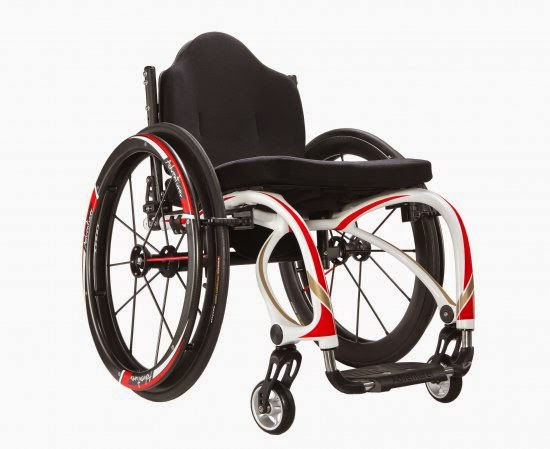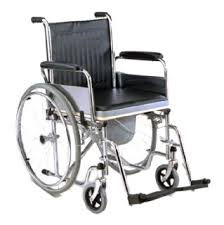Build a Better Chair: Materials
- sportsabilities

- Dec 8, 2014
- 4 min read
Wheelchair Manufacturers have been constantly trying to find the best material to build the most cost effective chair that will also provide strength, durability, and a low gross weight. The most common materials used are Carbon Steel, Chromoly Steel, Aluminum, Titanium, Magnesium, and Carbon Fiber. In this article, we are going to break down the properties of each material as far as convenience, weight, strength, cost, feel, durability, and use.

Carbon Steel-
Many of the wheelchairs that are made of steel are considered transport wheelchairs or bariatric wheelchairs. They are very strong and are typically very inexpensive ($80-$1200).

Chromoly Steel-
Chromoly is the workhorse of the industry as it is a light, strong steel. When it is butted and shaped to take off excess weight, it can delivery a fairly light frame (28 to 50lbs with the wheels) that will last through years of hard use. Many of the chromoly steel chairs that you will see are narrow tubed (around 1" in diameter). Given its strength and durability, Chromoly chairs are typically referred to as Tanks since they can really take a beating, be easily repaired, last forever, but are not nearly as light-weight as the other materials on the list. These chairs are typically in the "less expensive" catagory of wheelchairs ($900 to $1800). Chromoly also does not flex as much as the other materials so you feel what you hit. The absorbsion of bumps in the road are directly transferred to the rider. This material makes for a decent sport wheelchair as it will handle contact with other chairs well and hold up to abuse.
Aluminum-
Aluminum is by far the most popular material used in todays manual wheelchair market. It is strong, light, (22 to 45lbs with the wheels) and very easily welded/repaired. The most popular yield for high quality, light-weight wheelchairs is 6061-T6 "aircraft" aluminum because of its great strength qualities. Aluminum is about half the weight of Titanum but is not nearly as strong so in order to achieve that necessary strength, the interior tube wall must be thicker (which adds weight). Aluminum is a relatively inexpensive metal making it a great option for the cost-weight debate. It also flexes well to help absorb bumps in the pavement. These chairs tend to fall into the middle of the cost category ($1600-$2800). If you are looking for a great, comfortable chair that should last 5 to 7 years and not break the bank, Aluminum is a great option.

Titanium-
Lighter than steel but just as strong (18 to 35lbs with the wheels). Titanium is a more expensive metal found on many of the more "high-end" wheelchairs. The people who roll titanium swear by the performance and durability. Many keep it in its natural "gun metal" color which doesn't show scratches and wear like the paint on the other metals. The biggest shortcoming of Titanium is should it need to be fixed or welded. Titanium needs to be welded in an inert environment which takes special training and a different skill set. Titanium chairs are also more expensive making insurance coverage more challenging ($2400-$4200).

Magnesium-
Magnesium is the 8th most abundant material on earth and is highly utilized in the aircraft, aerospace, and high end automotive industries. It is the lightest structural metal (35% lighter than Aluminum and 62% lighter than Titanium), Magnesium boasts a superior strength to weight ratio and excellent dampening abilities. These qualities lead to a ridiculously light frame (14 to 25lbs with the wheels), excellent pushing efficiency, and a smooth roll. These benefits come at a cost, however. These chairs are much more expensive ($4000-$5500), are rarely covered by health insurance, but will last "forever".

Carbon Fiber-
Wheelchair manufacturers have been experimenting with Carbon Fiber Wheelchairs for years, it has only been recently that viable options have been made available to consumers. Carbon Fiber is created by taking a bundle of continuous fibers and binding them together using a resin. These bundles are then plied together to make a very tough laminate. Carbon fiber is insanely light (5 to 12lbs with the wheels). We have personally weighed one of these chairs to be 5.1 pounds with the wheels. Carbon Fiber can be brittle and is flexible. The biggest question is how durable carbon fiber will be through the rigors of everyday use. It also takes some time to get used to the extreme light weight of the chair. It literally feels like you are sitting on air. The biggest hurdle of carbon fiber is the cost. These chairs easily top $9000 and are rarely covered by any insurance. However, if you have the means, you are almost guaranteed to be the only person pushing one in your neighborhood.

Please Note:
We write this article to inform you about the different options available to everyone. This is not an endorcement of any product or brand. We highly recommend that anyone looking for a particular piece of durable medical equipment do their own research and then refer to a professional for recommendations and fitting. Even the best and/or most expensive piece of equipment can only perform optimally if it is set up and adjusted to fit the occupant properly. Also note: weights and prices are approximate and estimated. Actual weights and prices will vary greatly due to size, setup, options, and location.






















Comments